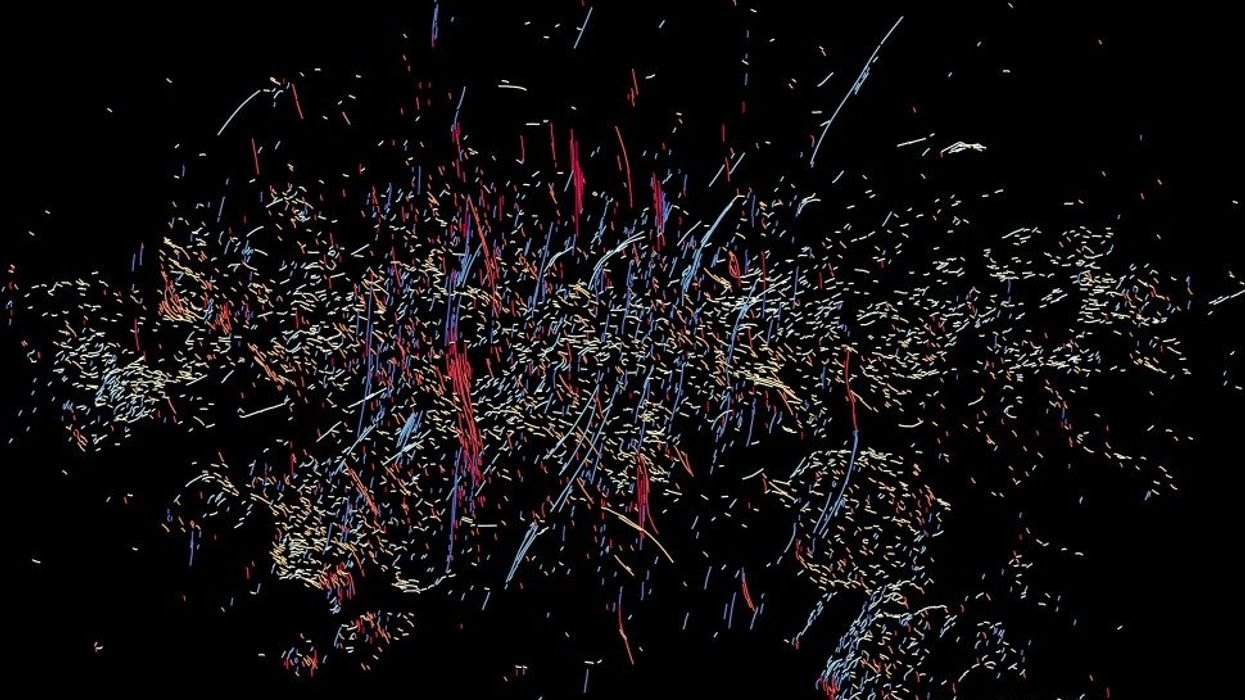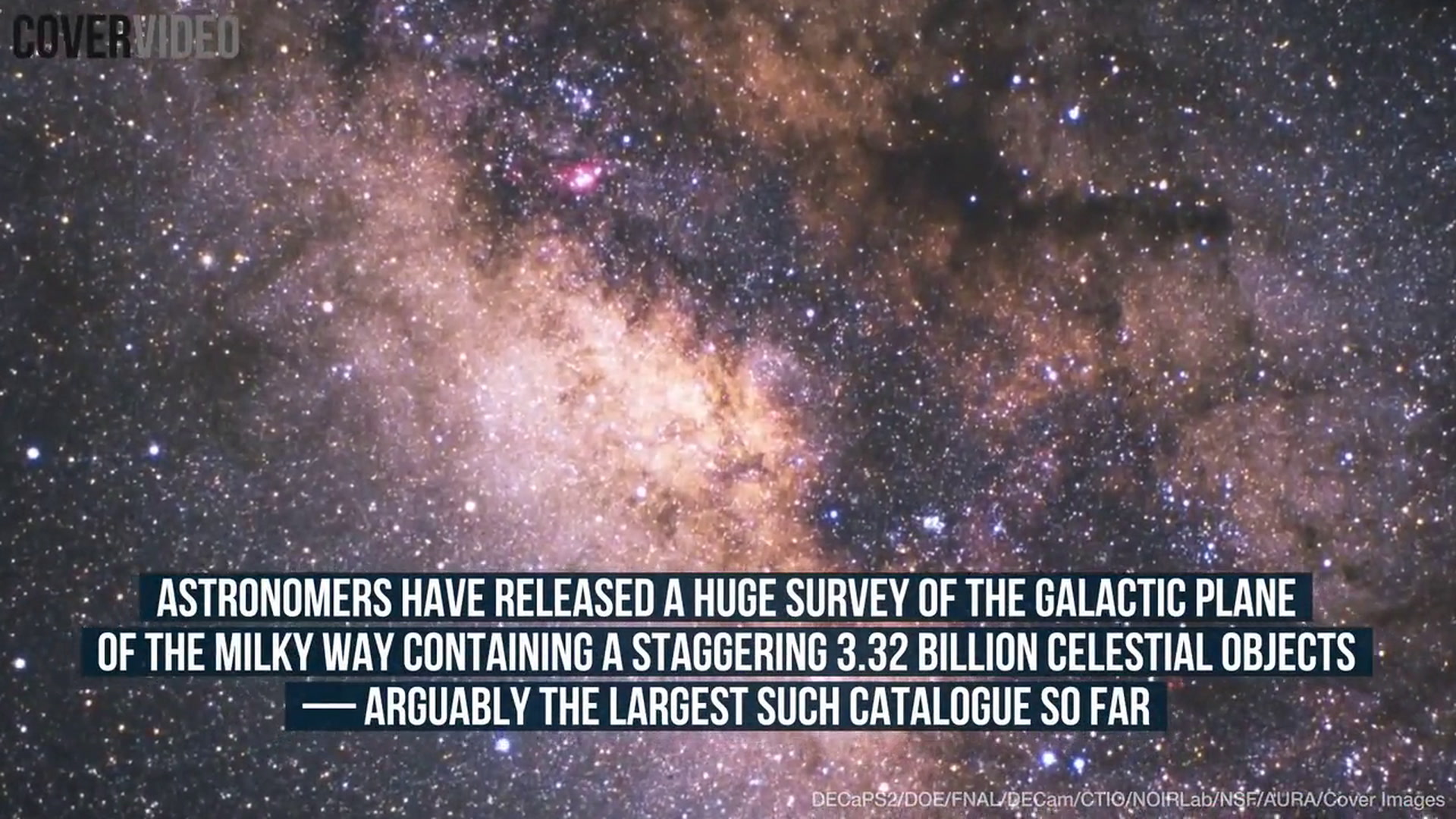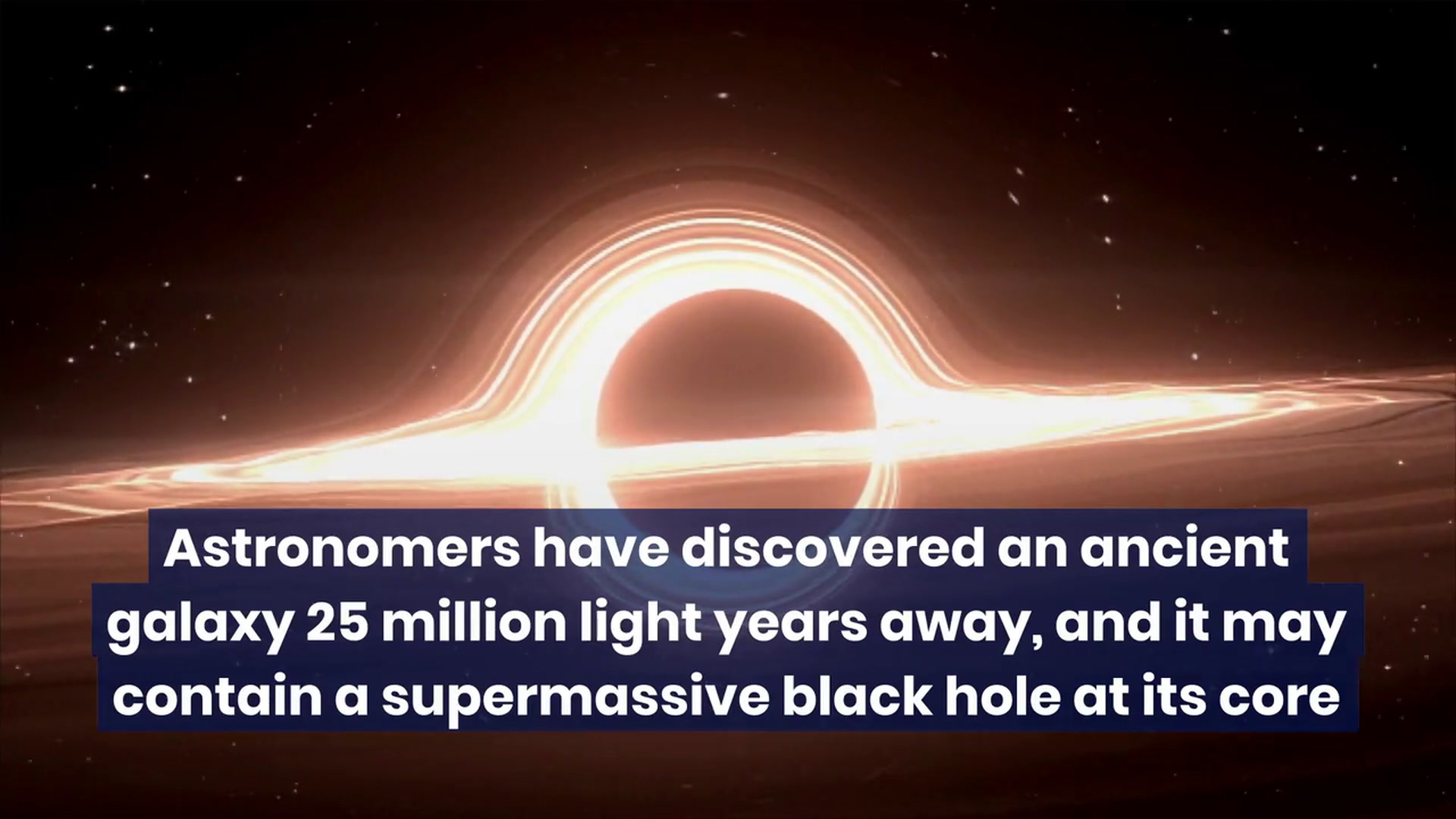Harriet Brewis
Jun 07, 2023

Astrophysicist Farhad Yusef-Zadeh has spend decades investigating the incredible structures
Farhad Yusef-Zadeh
The above image may look like a piece of colourful, abstract art, but it is, in fact, a glimpse at the very heart of our galaxy.
Most of us can’t even begin to imagine what lurks beyond our solar system, but astrophysicists in the US have discovered a whole colony of incredible structures at the centre of the Milky Way.
Scientists already knew that mysterious, magnetised strands hang in space, but a new investigation has uncovered a whole new population of them, and found that they are handily pointing in the direction of the galactic centre.
They are also different to the filaments that were previously unearthed by astrophysicist Farhad Yusef-Zadeh of Northwestern University back in the 1980s.
Those gigantic, one-dimensional strands were found dangling vertically near Sagittarius A*, our galaxy’s central supermassive black hole.
Sign up for our free Indy100 weekly newsletter
But the new threads, also discovered by Yusef-Zadeh, are much shorter and lie horizontally, “spreading out like spokes on a wheel” from the black hole, according to his team.
“While the vertical filaments sweep through the galaxy, towering up to 150 light-years high, the horizontal filaments look more like the dots and dashes of Morse code, punctuating only one side of Sagittarius A*,” Northwestern University said in a piece about the exciting discovery.
"It was a surprise to suddenly find a new population of structures that seem to be pointing in the direction of the black hole," Yusef-Zadeh admitted.
"I was actually stunned when I saw these. We had to do a lot of work to establish that we weren't fooling ourselves. And we found that these filaments are not random but appear to be tied to the outflow of our black hole.
“By studying them, we could learn more about the black hole's spin and accretion disk orientation. It is satisfying when one finds order in the middle of a chaotic field of the nucleus of our galaxy."
To illustrate the scale of the finding, it’s worth noting that the centre of our galaxy is 25,000 light-years from Earth and Yusef-Zadeh has been studying its mysteries for the past 40 years.

After studying the vertical filaments for decades, he was shocked to find their horizontal counterparts, which he estimates are about 6 million years old.
“We have always been thinking about vertical filaments and their origin,” he said. “I’m used to them being vertical. I never considered there might be others along the plane,” he said.
And whilst both groups are made up of one-dimensional threads that can be viewed with radio waves and which appear to be tied to activities in the galactic centre, that’s where their similarities end.
For example, the vertical filaments, which measure up to 150 light-years high, far surpass the size of the horizontal filaments, which measure just five to 10 light-years in length.
Also, the vertical filaments are perpendicular to the galactic plane, whereas the horizontal filaments are parallel to the plane and point towards the centre of the galaxy where the black hole lies.
And the vertical filaments are magnetic and relativistic; the horizontal filaments appear to emit thermal radiation. There are several hundred vertical filaments and just a few hundred horizontal filaments.

Yusef-Zadeh credits his new discoveries to enhanced radio astronomy technology, particularly the South African Radio Astronomy Observatory’s (SARAO) MeerKAT telescope.
To locate the filaments, his team removed background clutter and noise from MeerKAT images in order to isolate the strands from surrounding structures.
“The new MeerKAT observations have been a game changer,” he said. “The advancement of technology and dedicated observing time have given us new information. It’s really a technical achievement from radio astronomers.”
Still, Yusef-Zadeh’s work to unravel the mysteries of his new discovery has just begun.
“We think they must have originated with some kind of outflow from an activity that happened a few million years ago,” the expert astronomer said, adding that more research was needed explain the filaments’ origins.
“Our work is never complete,” he stressed. “We always need to make new observations and continually challenge our ideas and tighten up our analysis.”
Have your say in our news democracy. Click the upvote icon at the top of the page to help raise this article through the indy100 rankings.
Top 100
The Conversation (0)













